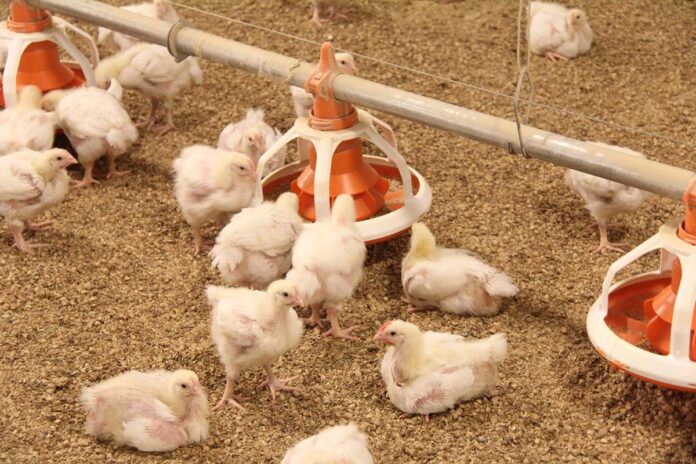
The caecal microbiota composition of commercial broilers is essential to the poultry industry as it can affect the broiler’s health and performance.
Bioactive components of the Black Soldier Fly larvae (BSFL) include antimicrobial peptides, chitin, and lauric acid. They are known to modulate the immune system of broiler chickens. This study aimed to investigate the impact of BSFL on the diversity, structure, and composition of the caecal microbiota of broilers fed up to 20% BSFL, partially replacing soybean meal and soybean oil in a commercial diet. A total of 400 Ross 308 male broilers were randomly assigned to 5 dietary treatments with 8 replicates in each treatment diet divided into 3 phases: starter (day 2 to 10), grower (day 11 to 21), and finisher (day 22 to 42). The inclusion levels of BSFL were 0, 2.5, 5, 7.5, and 10% in the starter diet followed by 0, 5, 10, 15, and 20% in the grower and finisher diets.
The caecal content of one broiler per cage (n = 40 cages) on day 21 and day 42 was used to extract the DNA using the DNeasy PowerSoil Pro kit (Qiagen, Inc., Doncaster, VIC, Australia) with some modifications. The V3-V4 region of the 16S rRNA gene was sequenced with Illumina MiSeq platform resulting 2×300 bp paired-end reads. The DNA sequence reads were analysed with QIIME2 using DADA2 plugin for quality control and denoising. The downstream analysis of the resultant feature table with frequency was done using Calypso.
Up to 20% BSFL dietary inclusion did not significantly alter alpha diversity measured with Shannon index or beta diversity measured with weighted and unweighted UniFrac both at day 21 and day 42. Shannon index was not significantly different either at amplicon sequence variants (ASV) or genus level at day 21 or day 42. Microbial diversity measured with other common alpha and beta diversity indicators were also similar between treatments.
The abundance of sequence variants representing Enterococcus and unclassified Christensenellaceae decreased at day 21 (P = 0.048) and (P = 0.025), respectively, compared to the control group when the BSFL were added into the broiler diets at 20%. However, at day 42, the sequence variants representing the Dehalobacterium increased in the 20% BSFL group compared to the control group (P = 0.027). Li et al. (2018) reported improvement in hens’ intestinal function accompanied by a Dehalobacterium decrease.
In conclusion, BSFL inclusion in broiler diets improved the broiler’s performance, but had negligible effects on the diversity of caeca microbiota in broilers at days 21 and 42, while 20% inclusion appears to affect the abundance of some bacterial groups. Therefore, BSFL can be used in broiler diets without detrimental effects on the caecal microbiota.
References are available on request.
From the Proceedings of the Australian Poultry Science Association – 2021

















